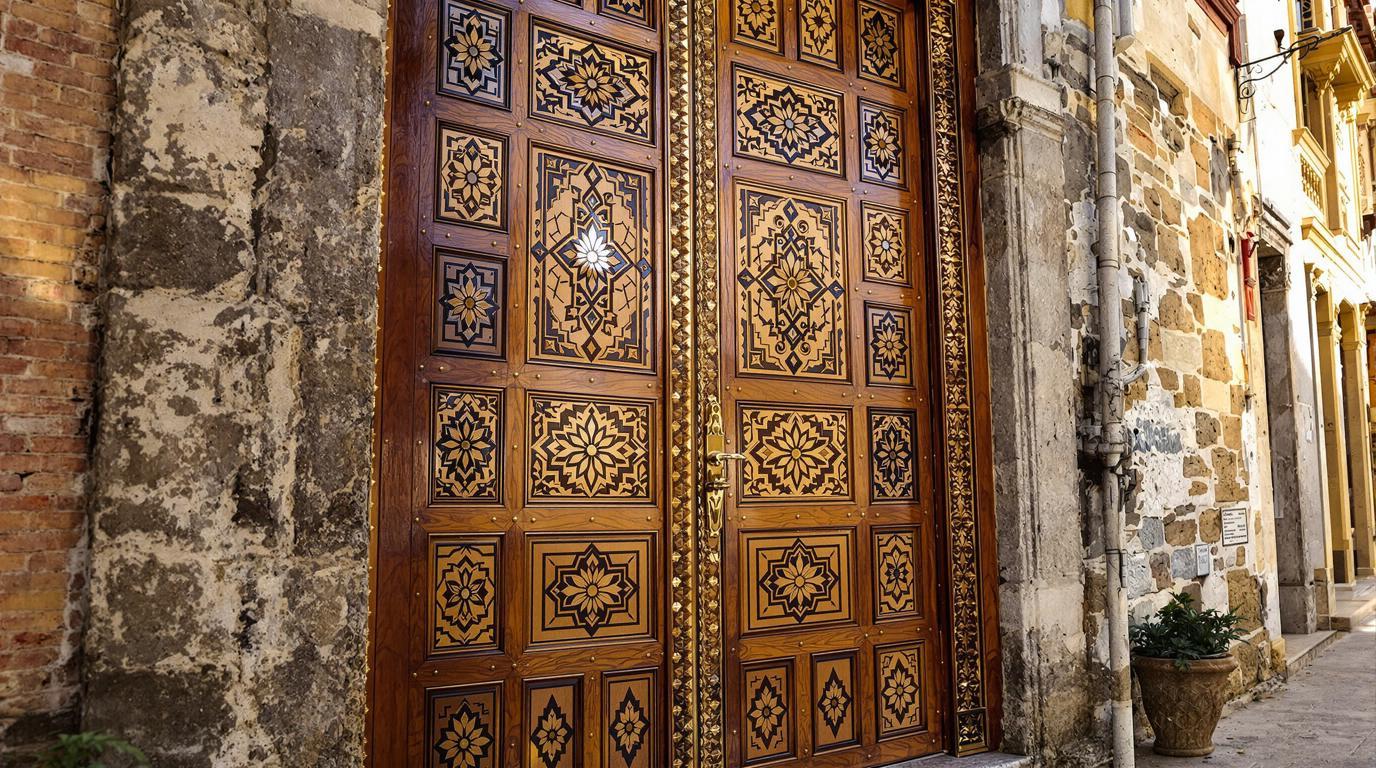Stone Town’s labyrinth of narrow streets whispers secrets from centuries past. This UNESCO World Heritage site, perched at 6.1357° S, 39.3621° E on Tanzania’s Unguja Island, remains one of Africa’s most evocative destinations. Unlike the postcard beaches that draw crowds to other parts of Zanzibar, Stone Town offers something rarer – a living museum where the architecture tells stories of Arab sultans, Indian merchants, European colonizers, and African resilience.
The doors that witnessed history
Stone Town’s magnificent carved wooden doors serve as the city’s most distinctive calling card. Each massive entryway, studded with brass spikes originally designed to repel elephant attacks, reveals its owner’s heritage. Arab-style doors feature rectangular frames, while Indian-influenced designs showcase semi-circular tops.
“These doors aren’t just architectural elements – they’re autobiographies,” explains Abdallah, a third-generation door carver. “The fish might represent prosperity, the lotus spiritual awakening. Every symbol carried meaning for the family inside.”
A cultural crossroads frozen in stone
Few places in Africa display such a vivid architectural tapestry. Persian bathhouses sit alongside Indian shopfronts, while delicate Arab-inspired balconies hang over narrow alleyways. Around every corner, crumbling colonial buildings with peeling paint stand as reminders of European occupation.
The House of Wonders (Beit al-Ajaib) dominates the seafront – once East Africa’s tallest building and the first structure in Zanzibar to have electricity and an elevator. Though partially collapsed in 2020, restoration efforts continue to preserve this iconic landmark.
The dark side of paradise
Stone Town’s beauty exists alongside sobering reminders of human suffering. The former slave market, now housing the Anglican Cathedral, features underground chambers where enslaved people were held before auction. The heavy stone memorial, with sculptures of chained figures, stands as a powerful testament to this painful chapter.
“We cannot erase this history, but we must acknowledge it,” says Fatma, a local guide. “The same ships that carried spices also carried people. Understanding this past helps us build a better future.”
Spice island flavors
Zanzibar earned its “Spice Island” nickname honestly. The aromatic treasure that once made it wealth still infuses its cuisine. At Forodhani Gardens night market, vendors grill seafood skewers basted with coconut, cardamom, and cloves – the same spices that brought traders across oceans centuries ago.
Don’t miss Zanzibar pizza, a savory stuffed pancake filled with minced meat, egg, and mayonnaise – despite the name, nothing like Italian pizza. Washing it down with fresh sugarcane juice completes the sensory experience.
Beyond the stone walls
While Stone Town captivates, nearby islands offer complementary adventures. Prison Island, just 30 minutes by boat, houses giant Aldabra tortoises, some over 150 years old. The more adventurous can explore Jozani Forest, home to the rare red colobus monkey found nowhere else on earth.
The Mercury connection
Few visitors realize Freddie Mercury was born Farrokh Bulsara in Stone Town. His childhood home now houses a modest museum celebrating the Queen frontman’s Zanzibari roots – though conservative local attitudes toward his lifestyle create a fascinating cultural contradiction.
Sunset dhow cruises
As afternoon fades, traditional wooden dhows with triangular sails drift along the horizon. These vessels, virtually unchanged for centuries, offer sunset cruises that frame Stone Town’s seafront in golden light – a photographer’s dream.
“The sea has always been our lifeline,” explains Ahmed, a dhow captain. “These boats connected us with Arabia, India, and the African coast. They built Zanzibar’s identity.”
Stone Town doesn’t just preserve history – it breathes it. As evening calls to prayer echo from numerous mosques and street lamps cast long shadows across weathered walls, visitors find themselves transported through time. This isn’t just another pretty destination – it’s a living testament to centuries of cultural exchange that continues to shape Zanzibar’s unique identity today.
